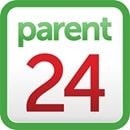
Okay, so your 3 year old refuses to pack away his toys, you’ve tried everything you know - things like singing the Barney "tidying up" song, getting on all fours pretending to be a wild animal on a mission to "clear up the forest", threatening to give every toy away unless the mess is cleared now, and finally; "I’ll count to 5!".
While experts will suggest giving a helping hand to make the process go quicker and friends keep telling you to keep it fun, there just doesn’t seem to be an end in sight.
Getting organised is not about getting tidy... it’s about knowing where to find your stuff. Understand that there are very few kids out there that have a natural tendency to neatness. They are too busy having fun. That is how they learn so that is what we should encourage.
In saying that, I am not suggesting that you do not teach your children the valuable skill of being organised. In fact, I’d be bold enough to say that this is one of the most powerful things that you can teach your children.
People who lead an organised life have time to do all the things that are important to them. They are able to create balance.
Lead by example
Keep your own things well organised. Children tend to copy what you yourself do, so set them a good example to follow.
Give them the tools to get organised
Containers
- Make things as simple as possible. Using containers that your child likes to look at helps her to like using them
Put toys at the right height
- Keep heavy objects and favourite toys low enough for children to reach
Open shelves
- Use open shelves to encourage them to put things back where they belong
Personalise toy boxes
- If you have more than one child, personalise their toy boxes so that there is no confusion. If your child is not yet able to read, make sure the item has a clear picture or colour they can identify with so they know which box is theirs
Use ziplock bags and sturdy boxes
- Take puzzles and games out of the original packaging (the boxes bend and break easily resulting in lost pieces). Place them in categories in zip lock bags within suitcase type boxes (this fit nicely onto a bookshelf). For smaller children it might be better to use smaller puzzle boxes (made of sturdy plastic with a clear lid for easy identification) to avoid the plastic bags
Use big tubs for big toys
- Use bigger toy tubs for larger toys - things like balls, hoops, bulky trucks and big dolls. Keep the lids off during play time to encourage them to take out a variety of toys while still making it easy for them to pack their things away
Small boxes to categorise toys
- Use smaller toy boxes to categorise toys. Separate blocks, cars, plastic tools, dolls clothes into their own boxes - write the item name on the box for easy reference (use colours and designs for younger children)
Art box
- Art supplies are expensive and potentially messy. Confine these items to an art box - stored on a higher shelf so your child needs to ask for assistance when they want to get messily creative




 Publications
Publications
 Partners
Partners














